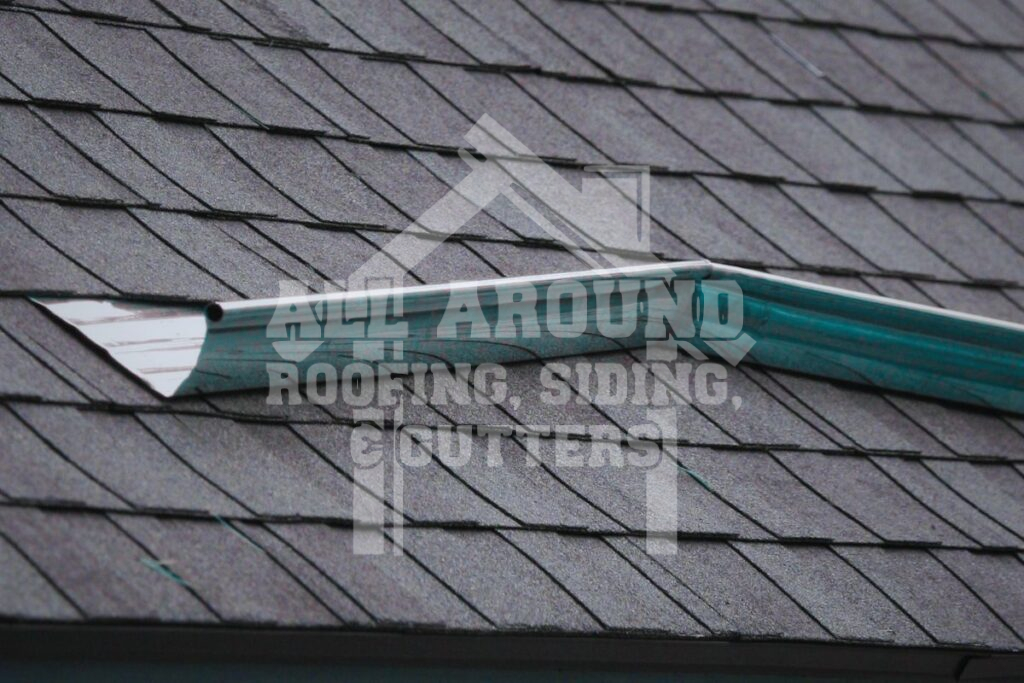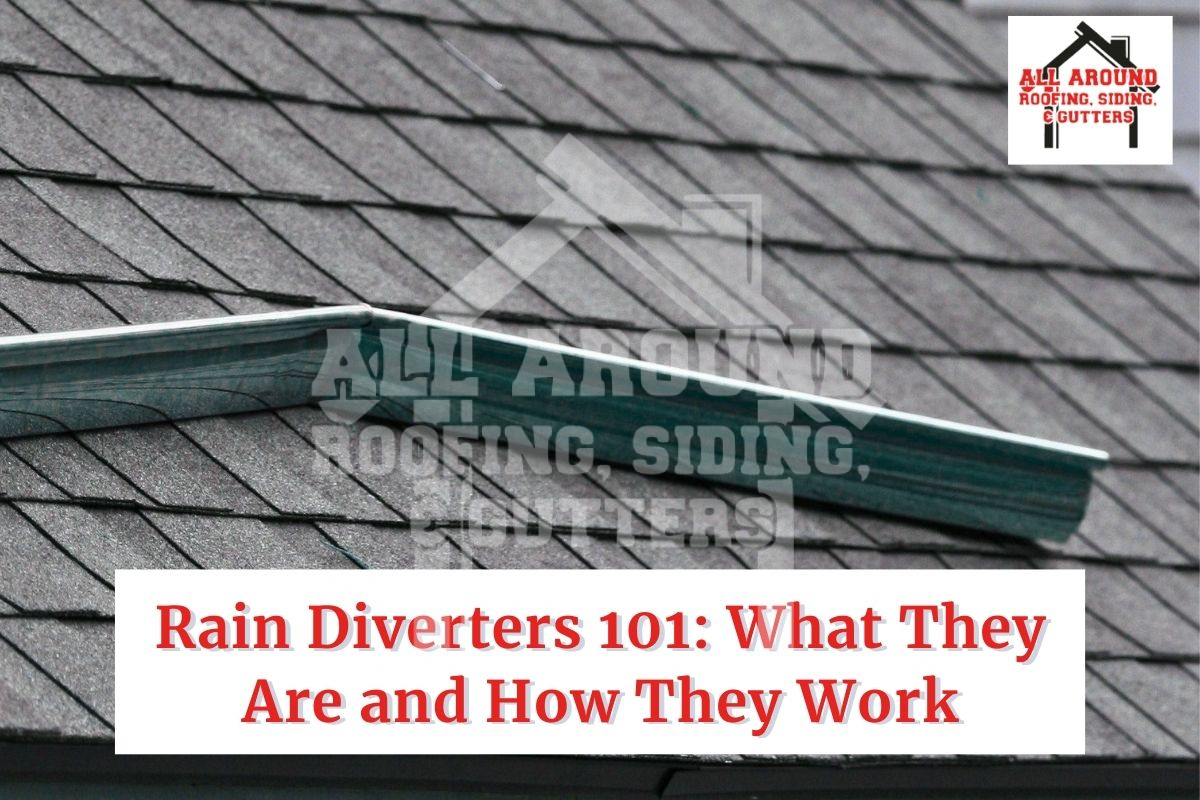Do you ever look out the window during a heavy rainstorm and notice water pouring down from your roof and collecting around your home’s foundation? It’s a common issue, but there’s an easy solution: rain diverters. These tools help manage excess rainwater, protecting your home and benefiting your wallet.
Let’s delve in and explore how rain diverters work and how they can make a difference for your property.
What is a Rain Diverter?
In order to manage water flow on your roof and direct rainfall from places susceptible to damage, roof rain diverters are a necessary investment. Their purpose is to divert runoff from areas such as windows, entrances, and low spots on the roof where it could collect and result in leaks or structural problems.
They are made of sturdy materials like plastic or metal. Rain diverters are especially useful in regions with severe rainfall or on roofs with intricate designs.
Also Read: 5 Gutter Accessories For a Leak-Free Home In 2024
How Do Rain Diverters Work?

Understanding Rain Diverters
1. L-shaped Design
Rain diverters are usually made from metal, like aluminum or galvanized steel, and have an L-shape. The vertical part faces the roof, while the horizontal part extends outward.
2. Where to Place Them
Install rain diverters above doorways, windows, or high-traffic areas to prevent water from pouring directly onto the ground. They can also be placed on the roof surface to ensure water flows smoothly into the gutters. Proper placement is crucial for effectively redirecting the water and keeping these areas dry.
How They Work
3. Catching the Water
As rainwater flows down the roof, it hits the diverter.
4. Redirecting the Water
The diverter channels water horizontally along the L-shaped section, guiding it away from doors and walkways to prevent puddles and splashing. Additionally, water from the roof that hits the rain diverter flows into the gutters and is directed away from the home.
Moving Water Away from Entrances
5. Directing Water Elsewhere
The water is moved to less-used areas like gardens, patios, or drainage spots, where it can safely go without causing problems around the home.
6. Preventing Damage
By moving water away from walkways and doorways, rain diverters help stop soil erosion around the house and protect outdoor furniture and landscaping.
Types Of Rain Diverters
1. Bent Rain Diverter
Installed over shingles and under the drip edge, this metal strip creates a gap that channels water away. It helps prevent leaks and keeps these areas dry.
2. Flat Rain Diverter
Placed under shingles and above doors or windows, this metal strip features a slight slope that directs rainwater away from the home. It reduces the risk of water damage at entry points.
3. Corner Roof Rain Diverter
Fitting into roof corners, this rain diverter redirects water away from areas where it collects. It protects the corners from damage and helps extend the roof’s life.
4. Flexible Rain Diverter
Made of moldable plastic, this diverter fits various roof shapes. Installed under shingles and over entry points, it guides water away effectively and is a cost-effective solution.
Benefits of Using Rain Diverters
1. Save Money on Water Bills
Rain diverters can direct rainwater into collection barrels for tasks like watering plants, washing cars, or filling pools, which can help lower your water bill.
2. Promote Healthy Plants and Soil
Collected rainwater is free of chemicals and chlorine sometimes found in tap water, promoting healthier plant growth and better soil quality.
3. Minimize Ground Saturation and Flooding
By reducing the amount of water entering the ground during heavy rain, rain diverters help prevent flooding and soil instability around your home.
4. Easy Installation and Maintenance
Rain diverters are simple to install and maintain, easily attaching to the roof surface or above windows.
5. Environmental Benefits
Using collected rainwater reduces the strain on municipal water supplies and supports water conservation efforts, especially in drought-prone areas.
6. Increase Property Value
Installing a rainwater harvesting system with rain diverters can increase your property value, as eco-friendly features are generally attractive to potential buyers.
How To Install A Rain Diverter
Prepare the Area
- Measure and Mark: Choose the spot for the diverter, usually above a doorway.
- Loosen Shingles: Carefully lift the second or third row of shingles using a pry bar.
- Cut Flashing: Trim the diverter flashing to be 2-3 feet longer than the area you want to cover.
Install the Diverter
- Slide Under Shingles: Place the diverter under the lifted shingles, centering it.
- Angle the Diverter: Tilt one side slightly lower (about 1 inch) to direct water flow.
- Secure with Nails: Lift the shingle tabs and nail the diverter in place.
Seal and Finish
- Apply Sealant: Seal all nail heads and gaps with roofing sealant.
- Press Shingles Down: Reposition shingles and apply sealant underneath.
- Let Sealant Set: Allow time for the sealant to dry before exposing it to rain.
How To Choose The Correct Size Rain Diverter
#1. Measure the Area to be Protected
- Identify the Area: Decide the area to protect (e.g., doorway, patio).
- Measure Width: Measure the width of the area. Add at least 12 inches to each side to ensure the diverter covers the area.
Example: If the area is 4 feet wide, get a diverter that is at least 6 feet long.
#2. Consider Roof Material
- Material Types: Rain diverters are mainly for asphalt shingle roofs but can also work with:
- Slate
- Tile
- Metal
- Custom Adjustments: Depending on the roof type, you may need to make adjustments for a proper fit.
#3. Choose the Right Size
- Select Based on Measurements: Choose a diverter that meets or exceeds your calculated size.
- Overlap is Key: Ensure the diverter has enough length to provide adequate coverage and prevent water from spilling over the edges.
#4. Installation Considerations
- Secure Fit: Make sure the diverter is securely attached to the roof and downspout to prevent movement during heavy rain.
- Check for Blockages: Regularly inspect the diverter for debris or blockages that could impede water flow.
Conclusion
Rain diverters are a smart and effective way to manage rainwater. By redirecting it away from vulnerable areas, they protect your roof, siding, foundation, and walkways. Invest in this simple solution to prevent costly damage while improving your home’s appearance.
With a great selection of gutter accessories, All Around Roofing, Siding & Gutters offers rain diverters, downspout extensions, and more to help manage water flow and protect your home. Trust our expert team for reliable gutter solutions and outstanding service! Call us at (937) 902-2839.


